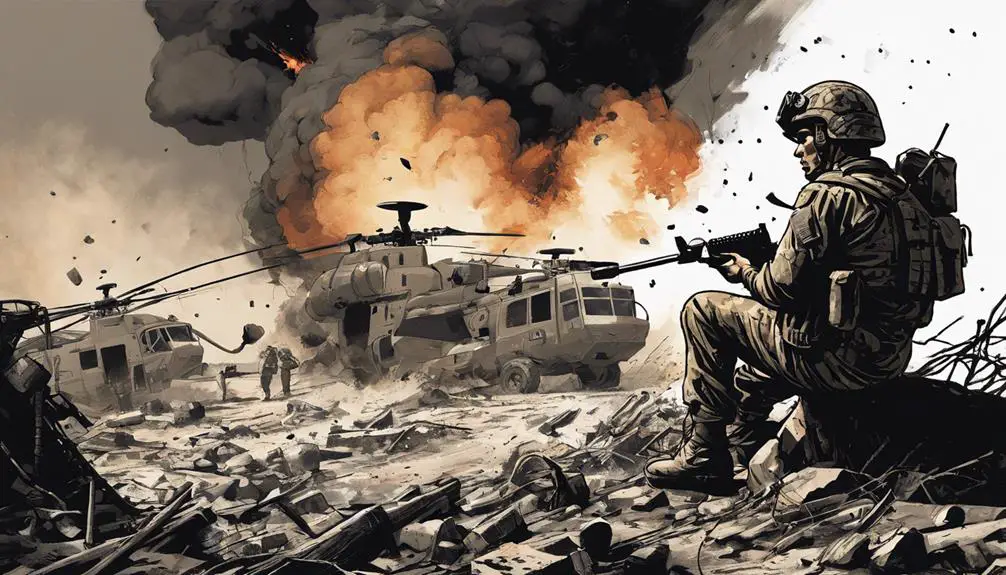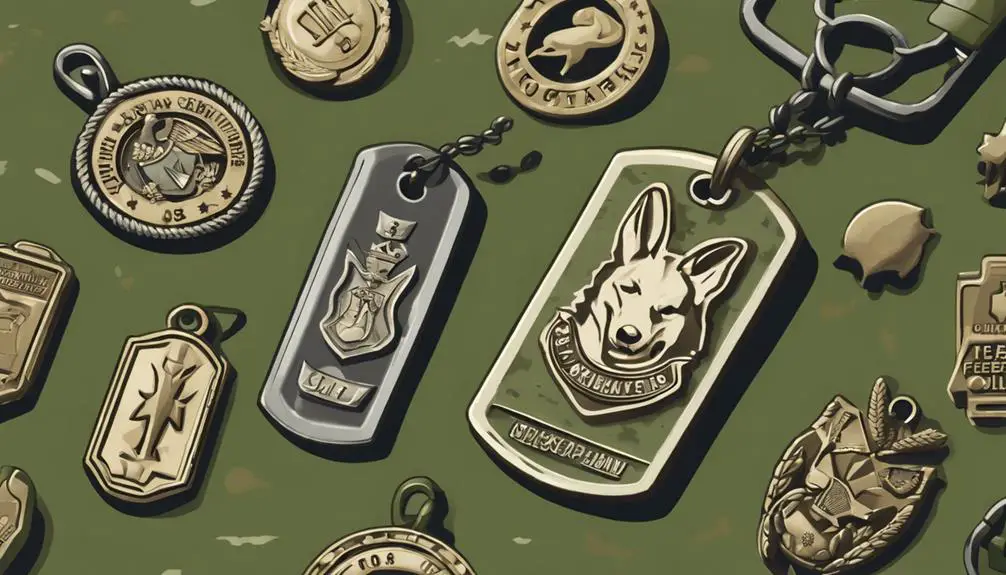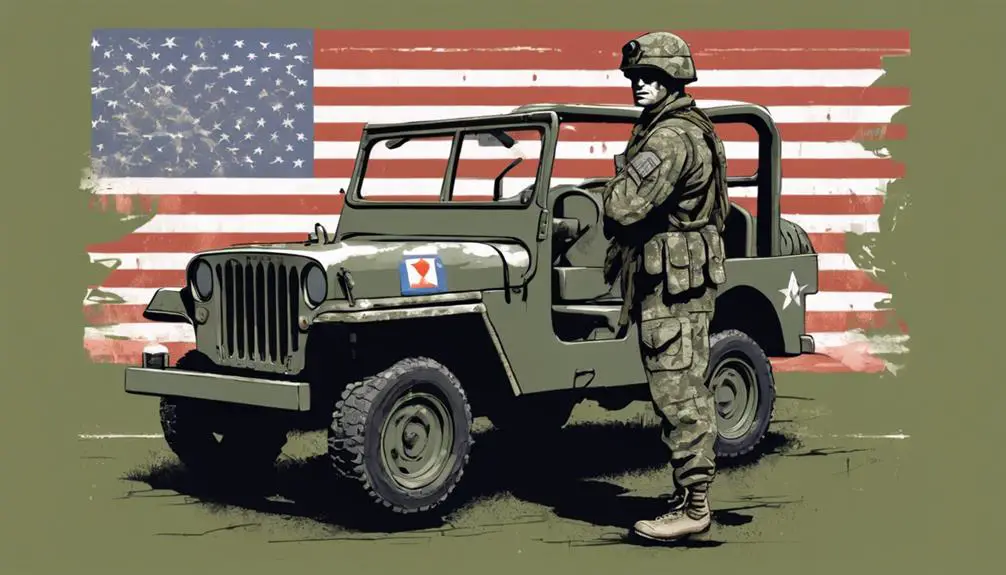You've stumbled upon the term ROTM in military conversations, but what does it mean? In essence, ROTM stands for 'Rest of The Military', a term specific to the Marine Corps. It's used to differentiate between infantry and non-infantry personnel, with its tone ranging from lighthearted to derogatory depending on the context. This acronym is part of a broader landscape of military slang, emerging from the need for concise communication in high-pressure situations. As you explore the world of military jargon, you'll uncover more nuances and intricacies that shape the unique culture and language of the armed forces.
Origins of Military Slang

As you explore the world of military slang, it's important to understand that the origins of this distinctive language can be traced back to the earliest days of military organizations, when soldiers and sailors used colloquialisms to communicate quickly and efficiently. During wartime, the need for swift and discreet communication became essential, and colloquial expressions emerged as a response to this requirement.
You'll find that cultural influences played a significant role in shaping military slang. As armies and navies expanded, they incorporated words and phrases from conquered territories and foreign allies. This blending of languages and dialects contributed to the development of a unique, informal language.
The historical context of military slang is also crucial to take into account. From the trenches of World War I to the jungles of Vietnam, soldiers have continually adapted and modified their language to suit their environment. Understanding the origins of military slang provides an important context for grasping its significance and evolution over time.
ROTM Definition and Meaning
Now that you've explored the origins of military slang, you're likely curious about specific terms like ROTM, which stands for 'Rest of The Military.' This acronym is commonly used in military lingo to refer to all branches of the armed forces except the one being specifically mentioned. For instance, if someone says 'the Army and ROTM,' they're referring to the Army and all other branches of the military.
The ROTM etymology is rooted in the need for brevity and efficiency in military communication. Military lingo often employs abbreviations and acronyms to convey complex information quickly and accurately. ROTM is a prime example of this, as it allows personnel to concisely refer to multiple branches without enumerating each one individually.
In essence, ROTM is a shorthand way to acknowledge the collective presence of all military branches beyond the one being explicitly mentioned. By understanding ROTM's meaning and significance, you'll better comprehend the nuances of military communication and the importance of concise language in high-pressure situations.
Battlefield Communication Needs

In the heat of battle, you rely on swift and accurate communication to guarantee mission success, and ROTM is just one of the many tools used to convey critical information efficiently.
As a military personnel, you understand the importance of seamless communication on the battlefield. In today's modern warfare, communication needs have evolved to prioritize speed, security, and crucial.
Tactical radios play a significant role in facilitating real-time communication between units, allowing for swift coordination and response to emerging threats.
To secure communication, military networks are designed to be highly secure and resistant to interception. Secure networks enable encrypted transmission of sensitive information, safeguarding operational plans and troop movements from enemy surveillance.
The integration of ROTM and other communication tools with secure networks enables you to focus on the mission at hand, knowing that critical information is transmitted efficiently and securely.
Evolution of Military Jargon
You've likely encountered a myriad of acronyms and abbreviations, such as ROTM, that have become an integral part of military communication, and understanding their origins and evolution is key to effective communication in the field.
The evolution of military jargon is a fascinating story of linguistic adaptation, driven by the need for rapid communication in high-stress situations. Military slang has developed as a unique cultural identity, shaped by the shared experiences and challenges of military personnel.
- Imagine a team of soldiers huddled around a radio, quickly exchanging coded messages to coordinate their attack strategy.
- Picture a group of Marines using hand signals to silently communicate during a stealth mission.
- Envision a commander using a coded phrase to alert troops of an impending threat.
This specialized language has emerged as a result of the military's need for concise and secure communication. As the military continues to adapt to new technologies and operational environments, its linguistic evolution will play a critical role in maintaining effective communication and ensuring mission success.
Common Military Acronyms Used

From 'ROTM' to 'SITREP,' military personnel rely on a vast array of acronyms to convey complex information quickly and securely. As you explore the world of military communication, you'll encounter a plethora of abbreviations that have become an integral part of military culture. These acronyms serve as a shorthand for conveying critical information, allowing personnel to rapidly exchange complex data without compromising security.
The use of acronyms in the military dates back to World War I, when the need for secrecy and brevity became paramount. Since then, military codes have evolved to incorporate new terminology, reflecting advancements in technology and changes in operational environments. Today, military personnel use acronyms to convey everything from tactical operations to logistical support.
Familiarizing yourself with these acronyms is essential to understanding military communication. By understanding the nuances of military codes and their history, you'll gain a deeper appreciation for the intricate world of military jargon.
ROTM in Modern Military Culture
Within modern military circles, ROTM has become an indispensable acronym, allowing personnel to swiftly communicate critical information about troop movements and logistical operations.
As you explore further into the world of military communication, you'll discover that ROTM plays a crucial role in ensuring seamless coordination and execution of missions.
- Imagine a battalion commander rapidly deploying troops to a high-risk zone, relying on ROTM to synchronize movement and minimize exposure to enemy fire.
- Picture a logistics officer utilizing ROTM to coordinate supply drops, ensuring timely delivery of critical resources to the front lines.
- Envision a special operations team leveraging ROTM to orchestrate a daring raid, synchronizing every move to achieve tactical supremacy.
In this high-stakes environment, ROTM serves as a linchpin, facilitating clear and concise communication that boosts tactical morale and bridges the digital divide.
Decoding Military Lingo Challenges

Mastering ROTM and other military acronyms is just the first hurdle; deciphering the nuances of military lingo poses a significant challenge, requiring a deep understanding of context, tone, and intent. As you navigate the complex world of military communication, you'll encounter Lingo Barriers that can lead to Communication Breakdown. You might find yourself wondering what a particular phrase or acronym means, only to realize that it's specific to a particular branch or unit.
| Military Lingo | Civilian Equivalent | Potential Misunderstanding |
|---|---|---|
| 'HOOAH' | 'Yes' or 'Agreed' | Misinterpretation as a casual expression |
| 'ROTM' | 'Right Out of the Manual' | Assuming it's a literal instruction |
| 'SITREP' | 'Situation Report' | Confusing it with a casual update |
| 'FOB' | 'Forward Operating Base' | Mistaking it for a generic term |
| 'OPSEC' | 'Operational Security' | Underestimating its importance |
To overcome these challenges, recognizing the potential pitfalls and taking the time to learn the intricacies of military lingo is crucial. By doing so, you'll be better equipped to communicate effectively and avoid misunderstandings.
Frequently Asked Questions
Is ROTM Used Only in the US Military or Globally?
As you explore the world of military jargon, you're likely wondering if a particular term has international prevalence. The question on your mind is whether it's a uniquely American phenomenon or if it's adopted across borders.
Surprisingly, the answer lies in the domain of cross-cultural adoption. While it originated in the US, its usage has spread globally, with international forces embracing the term, making it a staple in modern military communication.
How Does ROTM Improve Communication During Combat Missions?
When you're in the heat of combat, clear communication is vital. That's where ROTM comes in.
By using ROTM, you can send clear signals and receive quick responses, enabling you to adapt to changing situations swiftly. This streamlined communication process guarantees that you stay one step ahead of the enemy, making it an indispensable tool during high-stakes missions.
With ROTM, you can react faster and make more informed decisions, ultimately increasing your chances of success.
Are ROTM and Other Slang Terms Taught in Military Training?
As you immerse yourself in the world of military training, you'll find that the proof is in the pudding – does the military curriculum include slang terms like ROTM?
The answer is yes, but not explicitly. While ROTM isn't a dedicated course, it's often woven into training exercises to enhance realism. This approach boosts training effectiveness, as it simulates real-world communication scenarios.
Can ROTM Be Used in Informal Military Settings, Like Social Media?
When you're online, you might wonder if certain phrases are acceptable in informal military settings, like social media.
In virtual spaces, cultural norms can blur the lines between personal and professional interactions.
You'll find that using colloquialisms can help build a sense of community, but maintaining a level of professionalism in your virtual presence is crucial.
Are There ROTM Equivalents in Other Languages or Cultures?
When exploring cross-cultural communication, you'll find that phrases similar to ROTM don't directly translate across languages or cultures. Language barriers and nuances in idioms hinder direct equivalents.
However, in conducting a cross-cultural analysis, you might discover analogous expressions that convey a similar tone or meaning. For instance, in French, 'c'est la vie' or 'tant pis' convey a similar sense of resignation or frustration.
Conclusion
As you navigate the complex terrain of military communication, remember that ROTM is more than just a acronym – it's a beacon of clarity in the fog of war.
Like a compass, it guides soldiers through the chaos of battle, ensuring that critical information reaches its destination.
In a world where seconds count, ROTM is a lifeline, connecting troops across the battlefield like a digital thread.







